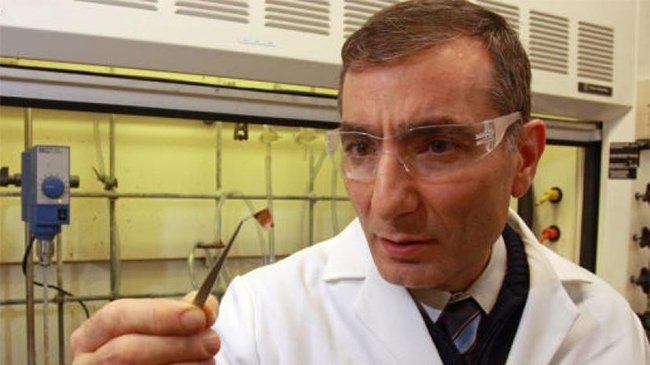Memory capacity breakthrough adds legroom for IoT
Published 04-FEB-2016 12:20 P.M.
|
3 minute read
Hey! Looks like you have stumbled on the section of our website where we have archived articles from our old business model.
In 2019 the original founding team returned to run Next Investors, we changed our business model to only write about stocks we carefully research and are invested in for the long term.
The below articles were written under our previous business model. We have kept these articles online here for your reference.
Our new mission is to build a high performing ASX micro cap investment portfolio and share our research, analysis and investment strategy with our readers.
Click Here to View Latest Articles
Hot on the heels of a major breakthrough earlier this month, Weebit has announced yet another technological first in the non-volatile memory space.
In mid-January, Weebit developed a “nano-porous Si ReRAM” solution with filament size less than 5 nanometres (nm) in scale; an achievement that’s expected to empower its future products with superiority over other ReRAM contenders.
Today, Weebit has further bolstered its technical supremacy by announcing that under the leadership of highly renowned Professor James Tour, its development team has achieved a “3-D developmental milestone that will enable substantial increases in memory capacity” used in electronic devices such as watches, phones, and tablets.
Weebit’s team was able to fabricate a 1Kbit 1D-1R crossbar array consisting of SiOx (silicon oxide) bit-cells and diodes. In a world first, Weebit’s 1Kbit array demonstrates the possibility to produce an ultra-high performance 3-D memory array that can ultimately serve as a “Flash device replacement”.
If and when a 3-D memory array is manufactured, it will allow enormous memory capacity to be placed in smart watches, wearables, smartphones and all other devices requiring a storage feature.
The 1 Kbit 1D-1R crossbar array feasibility study included successful writing, storing and reading words in ASCII code to the device. Weebit also says that its diodes were fabricated with CMOS-compatible non-toxic materials to be easily integrated in the most advanced silicon processes.
Technical results
Performance metrics successfully demonstrated included:
- Switching behaviour by conducting nano-filaments forming at a sub-5nm scale
- Switching speed of ~50ns for set and reset process
- Capability of exhibiting multi-bit switching behaviour at each cell
Currently, flash memory dominates the data storage/memory industry but is struggling to meet the heavy memory and storage demands from high-end professional users such as cloud servers and corporate data centres. For consumers, the advent of the Internet of Things has meant a greater amount of devices being used, and therefore, more data being created, shared and stored – all of which put additional strain on flash memory storage.

Inventor of Weebit’s ReRAM technology, Professor James Tour
Inventor of Weebit’s ReRAM technology Professor James Tour, said, “The materials for the diodes have now been selected and tested to work. We will now build a 2-dimensional 1 kilo-bit memory using the crossbar design with a diode atop each silicon oxide memory bit. Once that is demonstrated, we will embark on the layering of that 2-dimensional design to make a truly 3-dimensional architecture.”
The breakthrough could potentially create a patent-protected competitive advantage enabling Weebit to become a dominant force in ReRAM storage in the coming years, following the completion of the reverse takeover deal currently in progress.
Weebit hopes to produce a fully working prototype of its next generation ReRAM storage technology within the coming 18 months.
About Weebit Nano
Weebit was incorporated in Israel in 2014. Domiciled in Tel Aviv, Weebit in partnership with Rice University is one of the world’s foremost developers of Silicon Oxide {SiOx) ReRAM technology. It has been built around a revolutionary memory and semiconductor technology invented by Professor James Tour of Rice University in Houston, Texas.
Weebit is developing Tour’s new silicon oxide (SiOx) Resistive Random Access Memory (ReRAM) technology, and will be able to show a commercially viable product within 18 months. This quantum leap will allow semiconductor memory elements to become cheaper, faster, more reliable and more energy efficient than the existing Flash technology.
Weebit’s technology has also been field tested by NASA. The US space agency sent Weebit’s components on a two year space mission where intensive testing led to NASA awarding Weebit’s components with ‘Hard-Rad’ status, meaning they are “impervious to the effects of radiation”.
General Information Only
This material has been prepared by StocksDigital. StocksDigital is an authorised representative (CAR 000433913) of 62 Consulting Pty Limited (ABN 88 664 809 303) (AFSL 548573).
This material is general advice only and is not an offer for the purchase or sale of any financial product or service. The material is not intended to provide you with personal financial or tax advice and does not take into account your personal objectives, financial situation or needs. Although we believe that the material is correct, no warranty of accuracy, reliability or completeness is given, except for liability under statute which cannot be excluded. Please note that past performance may not be indicative of future performance and that no guarantee of performance, the return of capital or a particular rate of return is given by 62C, StocksDigital, any of their related body corporates or any other person. To the maximum extent possible, 62C, StocksDigital, their related body corporates or any other person do not accept any liability for any statement in this material.
Conflicts of Interest Notice
S3 and its associated entities may hold investments in companies featured in its articles, including through being paid in the securities of the companies we provide commentary on. We disclose the securities held in relation to a particular company that we provide commentary on. Refer to our Disclosure Policy for information on our self-imposed trading blackouts, hold conditions and de-risking (sell conditions) which seek to mitigate against any potential conflicts of interest.
Publication Notice and Disclaimer
The information contained in this article is current as at the publication date. At the time of publishing, the information contained in this article is based on sources which are available in the public domain that we consider to be reliable, and our own analysis of those sources. The views of the author may not reflect the views of the AFSL holder. Any decision by you to purchase securities in the companies featured in this article should be done so after you have sought your own independent professional advice regarding this information and made your own inquiries as to the validity of any information in this article.
Any forward-looking statements contained in this article are not guarantees or predictions of future performance, and involve known and unknown risks, uncertainties and other factors, many of which are beyond our control, and which may cause actual results or performance of companies featured to differ materially from those expressed in the statements contained in this article. S3 cannot and does not give any assurance that the results or performance expressed or implied by any forward-looking statements contained in this article will actually occur and readers are cautioned not to put undue reliance on forward-looking statements.
This article may include references to our past investing performance. Past performance is not a reliable indicator of our future investing performance.

